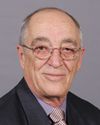The specific terms of reference are written in sort of bureaucratic language. I'll tell you what the problem was that we were trying to address. I think that's where your question is pointed.
One is complex eligibility. If you look at our eligibility chart, there are 14 different groups and about 33 footnotes. So you have quite a number of variations there. You have to be sort of an astrophysicist to figure it out. The cost of figuring that out means resources not directed to solving problems. It can be quite frustrating for our field staff. It's understandable. It's a patchwork of eligibility based on changes that have had good political merit since 1946. The problem is that in 1946 the people were of the average age of 26, but now they're 86 and they have to go through that kind of complex system. That is one.
The other one is trying to get an integrated system of health care, whereby one person assists an individual all the way through the health care system, so it's more or less a case management model. That was certainly seen to be a problem.
And the other is to make sure that, where possible, we are promoting good health practices, especially when a person is older, because there are a lot of payoffs. That was one of the things noted that we don't have in our programs now. We should have an integrated health service program.
Those are the three areas we were asked to focus on in the health review. We based the review on the report completed by the Gerontological Advisory Council, which is a group of academics, practitioners, and veterans organizations that has been advising the Department of Veterans Affairs for more than 12 years. It produced a report called Keeping the Promise, in which these problems—the three I mentioned to you—were addressed.




